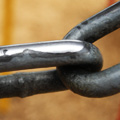 |
Here are some links which will be useful to those who are interested in the Fifth Fleet.
About camps for displaced persons in Germany and Austria
About your ship
About your migrant camp in Australia
About later life in Australia
About DP communties in Australia
And if you are here because you are interested in family history, the best place for Australians to start is with Cora Num's portal.
About camps for displaced persons in Germany and Austria
You'll find a wealth of information at the Displaced Person's Camps Website.
About your ship
United States Maritime Commission C4 Type Ships provides technical information for the "General" series of ships (all of which were C4-S-A1 troop transports) and another built to the same basic plan, the Marine Jumper.
Displaced Person Transports: Cargo of Hope is a page with photos about the "Generals" carrying Displaced Persons to the United States. The author travelled as a six-year-old in 1949 on the USAT General RL Howze. Later, this ship made two trips to Australia.
NavSource Auxiliary Ship Photo Archive provides links to potted histories (from an American perspective) and specifications of the "General" series, and seven of the "Marine" series, but not the Marine Jumper, as well as the aforesaid photos.
The Dictionary of American Naval Fighting Ships (DANFS) also provides a brief biography of each general plus a ship history, which is not as up-to-date, though, as that on the NavSource Photo Archive.
If you are looking to confirm on which ship you or your family came, or you'd like to find other passengers from the same voyage, go to the passenger list. Nearly half the passenger lists for the Fifth Fleet have been fully or partly transcribed for the Web by the Immigrant Ships Transcribers Guild, which also has transcribed lists for many other ships of the period which would have been carrying Displaced Persons.
In the offical language of the 1940s onwards, even into the era of movement by air, the passenger lists were known as the "nominal rolls". This is the term you should use if searching for the list for your ship at the National Archives of Australia site. When you find your nominal roll, consider asking the Archives to digitize it for you and others to see it on the Web. This costs $16.50 for each request (or I would have done this for you myself long ago!).
About your migrant camp in Australia
The Displaced Persons' Camps Website has pages on the camps in Australia.
If your first home in Australia was the Bonegilla Migrant Reception and Training Centre, visit the Albury LibraryMuseum site for a brief history.
The new Block 19 memorial, preserving the central part of the first accommodation at Bonegilla used for the Displaced Persons and Bonegilla staff is well worth a detour if you are on the road between Sydney and Melbourne. Block 19 was re-opened on 4 December 2005, but you should contact Parklands Albury Wodonga in advance to arrange internal access during your visit.
The main Web site for Ukrainians in Australia has pages on the Greta camp near Newcastle, the Chullora Railway and Migrant Camp in Sydney and the Uranquinty Camp in rural New South Wales.
Northam or Holden Camp in Western Australia has a Web page, which points out that the Camp is significant as one of only two intact camp precincts remaining in Australia.
About later life in Australia
The initial emphasis in this South Australian story of the Displaced Persons is on the grimmer aspects of the selection and voyage, but the remainder of the two pages gives a balance report on initial employment in places where Australians were reluctant to go.
The Terra Nova site is an excellent starting point for a consideration of the history of Poles in Australia, especially the Displaced Persons.
The Migration Heritage Centre at the Powerhouse Museum in Sydney has many stories and exhibits from many migrant communities.
The Australian National Maritime Museum in Sydney often has special exhibitions about migrants and migration, including Displaced Persons. It is home to one of the several Welcome Walls at Australian museums and heritage sites.
About DP communities in Australia
Most of the ethnic communities enlarged by the arrival of the Displaced Persons in Australia have set up excellent Web sites to link to their sometimes scattered members and to show their activities to visitors. Click on the links below to visit the
Croatians, via the Croatian Information Centre for South Australia
Czechs and Slovaks -- the Web site listing their community organizations is maintained by the Czech Embassy in Australia
Estonians
Jews
Latvians -- Latvians On-line is an international site which includes live links to the Australian Latvian communities in Brisbane, Sydney and Melbourne.
Lithuanians
Poles
Poles in Victoria
Russians (partly in English, partly in Russian)
Slovenians
Ukrainians (some Ukrainian language, lots of English) |
 |
|
|
|
 |
|
